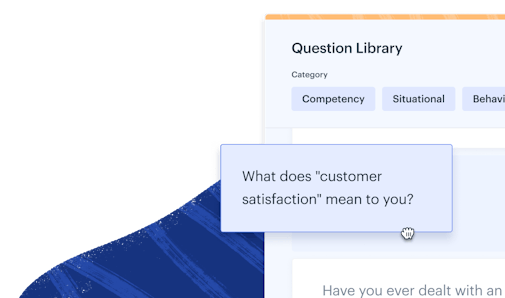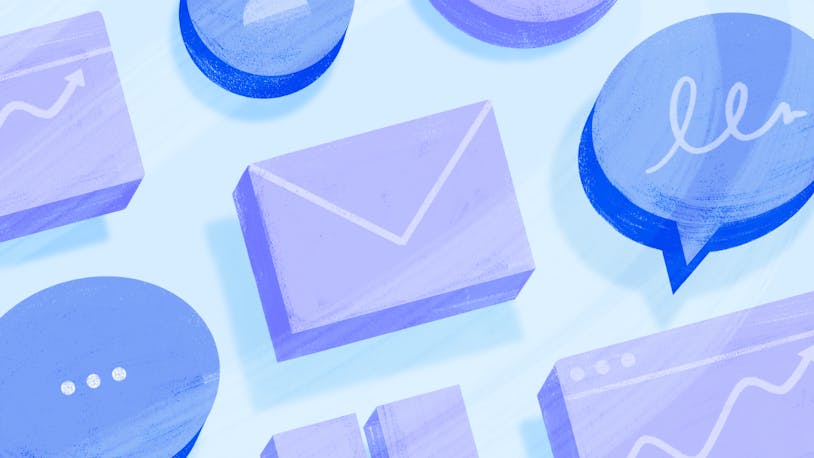7 Steps to Build a Thriving Customer Service Team


I recently put together a bookshelf for my office. No instructions needed for me, as I confidently wielded the allen wrench. Halfway through, though, when the pieces stopped fitting together, I realized I’d made a critical early error and had to undo it all and start over.
Building a customer support team is best done with a clear plan. You can wing it, but you will find yourself having to undo mistakes at tedious length later.
Whether you’re starting a support department from scratch or have been managing customer support for a while and want to ensure it is structured to succeed, these seven building blocks make for a solid foundation.
Download the ebook
Download this free guide by filling out the form below.

1. Define "great customer service" for your company
Nearly every company claims to provide great customer service. But not all customers have a great experience, so clearly there’s opportunity for improvement. That improvement begins with defining “great.”
When building a support department, you need to decide on the specifics of service quality you will provide and include your entire team in crafting that definition. Once you have defined what “great service” is for your company, you have a standard against which to measure your support team.
Foundations of Great Service
Discover the tools and techniques used by high-performing customer service organizations in our free, six-part video course.
Sign up for free
Deliver on your company values
One of software company Atlassian’s core values is “Don’t #@!% the customer.” They are an Australian company, which explains a lot. This very direct definition of “great service” means the support team (and the whole company) is taught to never break that value, and because it is a public value, their customers expect to be cared for.
If your company values integrity or speed, for example, those values should inform your definition of great service, and you should set your team up to deliver on those values.
Keep in mind that customer service teams can only offer service as good as the rest of the company will allow. If your CEO is Michael O’Leary, you’ll have some pretty clear upper boundaries to your level of service.
Consistently exceed customer expectations
If you want to stand out from your competitors, consistently exceed your customers’ expectations:
What are the typical response times in your industry — and of your biggest competitors? How can you improve on those times?
What level of service are your prospective customers used to, and how can you repeatedly exceed their expectations to delight them over time?
When you think in this way, you establish your company’s unique definition of great service, a level that your competition will then have to attempt to match.
Set internal expectations by asking the following questions:
How quickly will you respond to customers?
How will your team behave when dealing with customers (tone, language, attitude)?
How will you handle disagreements with customers?
What (if anything) are you not able to support?
Who in the company is responsible for customer service?
What ethical principles will you hold to?
These high-level expectations can be used to create style guides and standards of service.
Campaign Monitor, for example, created a simple checklist to standardize what a great reply to a customer should include. Southwest Airlines created a Customer Service Commitment that makes an extensive (and public) list of promises to their customers.
Your definition will give you a benchmark to measure your support against, to determine whether it is delivering on your standard of customer service.
Examine legal requirements
In Australia, a government customer service guarantee for telephone users sets out response time requirements for phone connection and repair. Do service level regulations apply to your industry?
If so, you can create your own definition of customer service that you will commit to following and, in some cases, use as an upsell opportunity for higher-priced or pay-to-play business models.
2. Decide which channels to support
When you’re committed to providing great customer service, it is tempting to say, “We’ll be available on every channel all the time!” But small teams almost certainly can’t provide consistently great support across all possible channels and timezones.
It’s far better to provide quality customer support on a few channels than to spread your team too thin and give inconsistent service. So how do you choose which channels your support team will monitor?
Find out what your customers are using
Look at what your existing customers naturally gravitate toward, and do some research on your target audience to make sure you are available on the platforms they're already using.
Do your customers contact you primarily by email, or is phone support the standard for your product or service type? Perhaps social media is an important channel for your audience. Find out which platforms are most popular and start by supporting only the top one or two.
Make the call
Different products and services fit more naturally with different support channels:
Technical support is often best done over email, but it can be frustrating over the phone.
Live chat is fantastic for retail products like clothing or banking where back-and-forth discussion with a knowledgeable agent is often required.
Keep this in mind when you’re deciding which channels you support.
The pros and cons of online customer service channels
| Channel | Pros | Cons |
|---|---|---|
It is conversational, asynchronous, and an excellent record of past discussion. | Email can be frustrating if there is a lot of back-and-forth required. | |
Phone | Allows for direct conversation in real time and remains very popular with older generations. | Phone support can be very time consuming (and costly), especially for smaller teams. |
Live Chat | Makes back-and-forth less cumbersome by allowing support teams to hash out issues in real-time without the necessity for long phone conversations. | Customer expectations for response time are higher than email, so it can still require more people. |
Social Media | Facilitates conversation around your product or service. | It’s a very public space, and people typically expect an immediate response, so consider that when you decide which platforms (and how many) to support. |
Forums | These allow your community to help each other, which can save you time and resources. | They require diligent monitoring to temper trolls and ensure customer questions get answered. |
Knowledge Base | An excellent way to scale your customer service efficiently by enabling your customers to help themselves. They’re well worth the effort in the long run for the time they save your support team. | They take some initial investment and ongoing maintenance. |
Whichever channels you choose, it’s best to start with fewer channels and add more later than to offer too many and have to close some down.
Capitalize on your existing skill sets
Do you have great writers or outgoing social influencers on the support team? Looking at your existing team’s strengths can help you decide what form of support to focus on in the early days and what gaps you need to fill in the long run.
3. Hire the right people
Providing high-quality, reliable customer support means that finding and hiring a great customer support team is crucial. Some key questions you should ask when hiring support team members:
What is the ideal support personality? Start with emotionally intelligent, empathetic, resourceful communicators, and then add factors specific to your company culture.
What skills should your support professional have? Do they need specific technical skills, licenses, or software knowledge? Ensure your job description, screening process, and interview questions list any necessary skill requirements and clearly differentiate them from the “nice-to-haves.”
How will you integrate them into your team? Once you’ve hired team members, plan out their first few weeks to teach them about your company culture and your approach to service, as well as the products and services they will support.
How do you keep them? Smart, engaged team members will want to continually grow and learn in their roles. Consider giving them a career path to follow and regular feedback so they know they’re on track.
Customer Support Hiring Calculator
See how changes in your customer growth, ticket volume, and self-service uptake affects your customer support hiring needs.
Start Calculating
4. Measure the right data
Many customer service activities are easy to measure. Your customer service software will produce detailed reports, but it can’t tell you which numbers really matter to your team and what you need to do about them.
In my experience, there are three big questions that will help you decide which metrics matter most to your situation:
Why are you reporting? Start with understanding the questions you’re trying to answer. For example, answer the questions “Do we have enough support staff?” or “Where do most of our support requests come from?” and work back to the right metrics.
Who are you reporting to? The level of detail and timing of your measurements should suit the different people to whom you’re reporting. Your team leads need different reporting than your COO.
What do you want the outcome to be? Report on the numbers that correlate with the change you want to see. If you want to make a case for more support staff, focus your reporting on trends in case volume per agent and the correlation between speed of reply and customer satisfaction.
The metrics you choose to report should be meaningful and authentic — there is no value in trying to present a false picture, because the customers will eventually reveal the truth. They should also be measures that your team can impact, or they risk being useless at best and outright demoralizing at worst.
Once you’ve selected your initial metrics, take baseline measurements and set some internal targets for your team to work toward.
5. Pick your tools
Battling with slow or unhelpful tools is a costly waste of your support team’s time and energy that would be much more usefully spent helping customers. However, customer service tools are often low on the priority list for companies that have limited budgets.
Your team will use these tools every day, for every customer interaction. Even small improvements in speed, accessibility, and comfort will quickly add up. Customer service software includes your help desk, but also any internal tools the team uses and individual productivity tools (like text expansion or screenshot managers).
Try the customer support platform your team and customers will love
Teams using Help Scout are set up in minutes, twice as productive, and save up to 80% in annual support costs. Start a free trial to see what it can do for you.
Try for free
Selecting customer service software
Your customer service software is your primary platform for customer conversations. This is the tool you will use the most, so select it with the most care.
If you’re not regularly answering customer questions yourself, it is easy to underestimate the value of a smooth workflow and a pleasant, efficient tool. Be sure to involve the people who will be using the help desk and weight their input accordingly.
Key questions when selecting customer service software:
What functionality do you need? How many people need to use it? What sort of conversations will it be handling? What platforms does it need to support? What do you want to report on?
What are your “nice to have” features versus necessary features? Try to differentiate between the “it would be nice if” features and the “everything will break if it does not do this” features. It’s far better to pick a tool that does the essentials really well than one with more features that your team struggles to use.
What apps do you need to integrate with? Do you have a requirement to connect with your CRM or your social media tools? Do you need API access for critical functions?
Even a small improvement in usability, performance, and functionality can make a huge difference when you multiply them by all the hours your support team will be using them.
Internal tools and systems
Have you ever walked around to the back entrance of a fancy store? Suddenly the sleek design and beautiful lighting is replaced with overflowing trash bins and exhausted employees sneaking a quick cigarette.
Software tools built in-house are often the back alleys of a company, given little attention or effort and built by people hurrying to get back to the “fun” work.
Customer service teams are often heavily dependent on internal systems like custom database searches, configuration pages, and logging systems to access customer information, fix issues, and report back to the company.
If you truly value their contribution, spend some time and effort to make those tools efficient and, if not attractive, then at least not actively painful to use.
Individual tools
Allowing your customer team some flexibility in which tools they use to get their job done will help them be more effective.
Provide budget for individuals to purchase small pieces of software and hardware that suit their requirements. Leave your team with flexibility everywhere you can because you will gain back much more than it costs you.
6. Create your knowledge base
Developing a knowledge base is time consuming, no doubt. But your investment will be rewarded tenfold when your customers can find answers on their own, lessening the strain on your support team. They also allow for faster onboarding and greater consistency of support.
A knowledge base will also save time when responding to common customer questions. Not only is the customer service team able to quickly answer the question, it also helps the customer learn that there is a knowledge base available to them at any time.
Most knowledge base software offers reporting tools, which are valuable for successfully scaling your support. It will show you where your customers are getting stuck, what documents need updating or adding, and how to prioritize product improvements.
Internally, taking the time to write down how certain issues are handled and how to use different tools will let new team members grow their skills without needing to disrupt the existing team.
You don’t need to do this all at once. You can build your knowledge base as you go, either as demand arises or by working from a support content calendar. Here are some great knowledge base examples if you’re looking for some inspiration.
7. Integrate support into your product and company
No matter how nice the person at the counter is, a disappointing product won’t attract loyal customers. No matter how great your frontline staff is, their experience is inevitably shaped by what the rest of the company does, too.
The goal of a customer-focused company should be to build in systems across teams that support great service so that delighting customers is more of an automatic outcome of doing business rather than an occasional, heroic feat. Support managers can take these steps to build systems into their teams:
Push decision-making to the front lines. Don't make your support team ask for permission to issue a refund or bend a rule. Give them tools and information to make better decisions, and back them up on it.
Automate customer-friendly processes. This ensures a more consistent customer experience and requires fewer decisions, which saves time for everyone involved.
Create feedback loops. Actionable input from customers needs to make it past support to be useful. Make sure you are providing a framework for your support team to share customer feedback with your product team and others.
Support your team. Your customer support team is fielding the good, the bad, and the ugly day in and day out, so treat them with the respect they deserve. They are also the voice of your customer, so involve them in product and strategy meetings. Celebrate their successes, and hold them accountable for their work.
Do the work
Customer service is not like a project that has a beginning, middle, and end. It is ongoing work that must adapt over time as the market, your customers, and your team change, and as you learn.
You may decide to add new channels of support, select new tools, or set new targets, but always remember to define good customer service for yourself and build out from there.
Your execution will need to adapt to the changing environment, but your principles of customer service will hold true.
Customer Service Interview Builder
Good interviews are at the heart of great hires. This tool makes it quick and easy to build a thoughtful interview process, from crafting job descriptions to asking the right questions.
Start building
The Supportive Weekly: A newsletter for people who want to deliver exceptional customer service.








